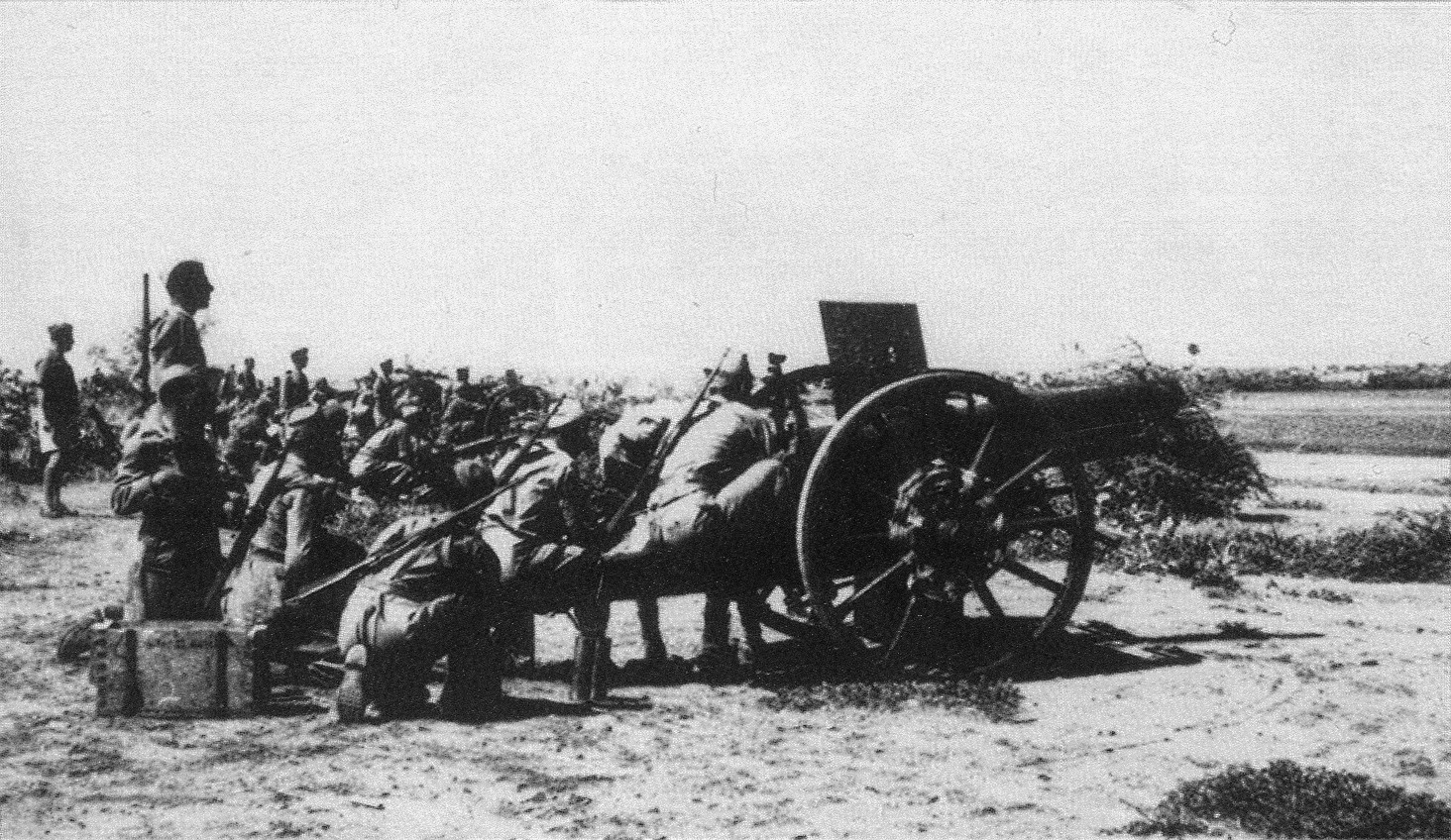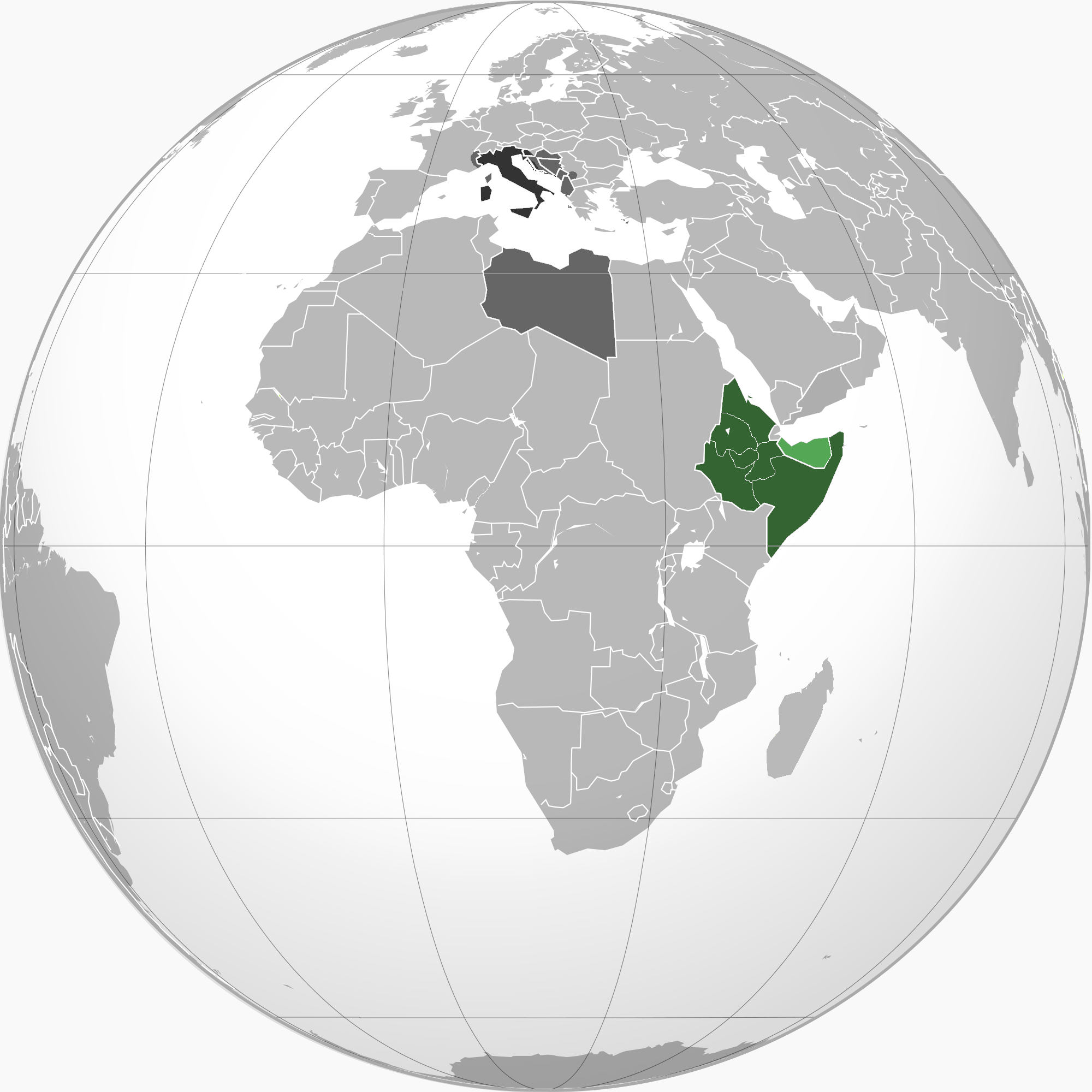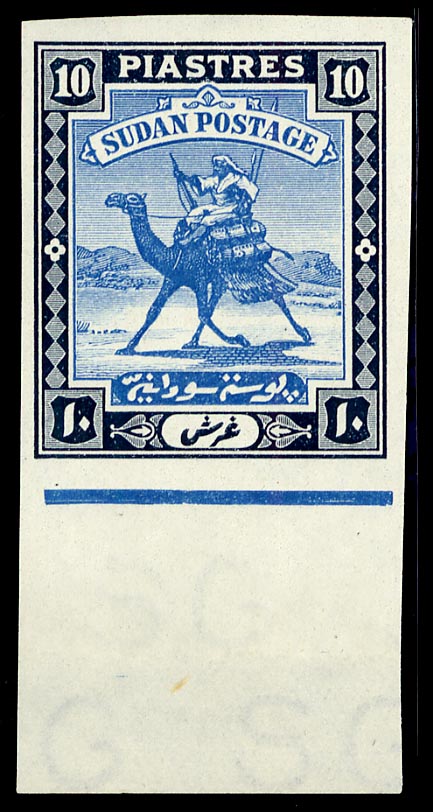|
Battle Of Agordat (1941)
The Battle of Agordat was fought near Agordat in Eritrea from 26 to 31 January 1941, by the Italian army and Royal Corps of Colonial Troops against British, Commonwealth and Indian forces, during the East African Campaign of the Second World War. The British had the advantage of breaking Italian codes and cyphers before the offensive and received copious amounts of information from Italian sources on the order of battle and plans of the (Italian Royal Air Force) and the Italian army. After the garrison of Italian and colonial troops at Kassala in Sudan was ordered to withdraw in mid-January, the British offensive into Eritrea due in February 1941 began in mid-January instead. Agordat was an excellent defensive position and the British advance was slowed by delaying actions and mined roads but the attack began on 28 January on the left (northern) flank, which was repulsed. Determined fighting took place on the hills and plain below until 31 January, when the British attacked behi ... [...More Info...] [...Related Items...] OR: [Wikipedia] [Google] [Baidu] |
East African Campaign (World War II)
The East African campaign (also known as the Abyssinian campaign) was fought in East Africa during the Second World War by Allies of World War II, mainly from the British Empire, against Kingdom of Italy, Italy and its colony of Italian East Africa, between June 1940 and November 1941. The British Middle East Command with troops from the United Kingdom, Union of South Africa, South Africa, British Raj, British India, Uganda Protectorate, British Kenya, Kenya, British Somaliland, Somaliland, British West Africa, West Africa, Northern Rhodesia, Northern and Southern Rhodesia, Anglo-Egyptian Sudan, Sudan and Nyasaland participated in the campaign. These were joined by the Allied of Belgian Congo, Ethiopian Empire, Imperial Ethiopian Arbegnoch (resistance forces) and a small unit of Free French Forces. Italian East Africa was defended by the (Italian East African Armed Forces Command), with units from the (Royal Army), (Royal Air Force) and (Royal Navy). The Italian forces inclu ... [...More Info...] [...Related Items...] OR: [Wikipedia] [Google] [Baidu] |
Royal Corps Of Colonial Troops
The Royal Corps of Colonial Troops ( or RCTC) was a corps of the Royal Italian Army, in which all the Italian colonial troops were grouped until the end of World War II in North Africa campaign. History Many of the Askaris in Eritrea were drawn from local Nilotic populations, including Hamid Idris Awate, who reputedly had some Nara ancestry. Of these troops, the first Eritrean battalions were raised in 1888 from Muslim and Christian volunteers, replacing an earlier Bashi-bazouk corps of irregulars. The four ''Indigeni'' battalions in existence by 1891 were incorporated into the Royal Corps of Colonial Troops that year. Expanded to eight battalions, the Eritrean Ascaris fought with distinction at Serobeti, Agordat, Kassala, Coatit and Adwa and subsequently served in Libya and Ethiopia. These troops were deployed on all fronts in Africa from the First Italo-Ethiopian War, the Italian-Turkish war, and the conquest of Ethiopia, until World War II. The colonial soldiers always s ... [...More Info...] [...Related Items...] OR: [Wikipedia] [Google] [Baidu] |
Sloop-of-war
During the 18th and 19th centuries, a sloop-of-war was a warship of the Royal Navy with a single gun deck that carried up to 18 guns. The rating system of the Royal Navy covered all vessels with 20 or more guns; thus, the term encompassed all unrated warships, including List of gun-brigs of the Royal Navy, gun-brigs and Cutter (boat), cutters. In technical terms, even the more specialised bomb vessels and fire ships were classed by the Royal Navy as sloops-of-war, and in practice these were employed in the role of a sloop-of-war when not carrying out their specialised functions. In World War I and World War II, the Royal Navy reused the term "sloop" for specialised convoy-defence vessels, including the of the First World War and the highly successful of the Second World War, with anti-aircraft and anti-submarine capabilities. They performed similar duties to the destroyer escorts of the United States Navy, and also performed similar duties to the smaller corvettes of the Royal ... [...More Info...] [...Related Items...] OR: [Wikipedia] [Google] [Baidu] |
SS Umbria
SS ''Umbria'' (formerly SS ''Bahia Blanca'') was a cargo ship built in 1912 in Hamburg, Germany, which plied the routes between Europe and Argentina. In 1918 the ship was acquired by the Argentinean Government and transported various goods (notably coal and agriculture products) across the Atlantic until 1934. In 1935 she was purchased by the Italian Government and renamed ''Umbria''. On 3 June 1940 she arrived at Port Said, Egypt which was controlled by the British. She was secretly carrying 6,000 tons of bombs, 600 cases of detonators, 100 tons of various weapons, over 2,000 tons of cement and three Fiat 1100 cars. Although expected to enter the war, Italy was still technically neutral, so on 6 June ''Umbria'' was allowed to continue her way. On 9 June the British warships and HMS ''Leander'' forced ''Umbria'' to anchor at Wingate reef near Port Sudan, Sudan on the pretext for searching for contraband. Shortly after that ''Umbria''s captain, Lorenzo Muiesan, heard on the rad ... [...More Info...] [...Related Items...] OR: [Wikipedia] [Google] [Baidu] |
Cavalry
Historically, cavalry (from the French word ''cavalerie'', itself derived from ''cheval'' meaning "horse") are groups of soldiers or warriors who Horses in warfare, fight mounted on horseback. Until the 20th century, cavalry were the most mobile of the combat arms, operating as light cavalry in the roles of reconnaissance, Screening (tactical), screening, and skirmisher, skirmishing, or as heavy cavalry for decisive economy of force and shock attacks. An individual soldier in the cavalry is known by a number of designations depending on era and tactics, such as a cavalryman, Equestrianism, horseman, trooper (rank), trooper, cataphract, knight, Drabant Corps of Charles XII, drabant, hussar, uhlan, mamluk, cuirassier, lancer, dragoon, samurai or horse archer. The designation of ''cavalry'' was not usually given to any Military animal, military forces that used other animals or platforms for mounts, such as chariots, Camel cavalry, camels or War elephant, elephants. Infantry who m ... [...More Info...] [...Related Items...] OR: [Wikipedia] [Google] [Baidu] |
Anglo-Egyptian Sudan
Anglo-Egyptian Sudan ( ') was a condominium (international law), condominium of the United Kingdom and Kingdom of Egypt, Egypt between 1899 and 1956, corresponding mostly to the territory of present-day South Sudan and Sudan. Legally, sovereignty and administration were shared between both Egypt and the United Kingdom, but in practice the structure of the condominium ensured effective British control over Sudan, with Egypt having limited local power and influence. In the meantime, Egypt itself fell under increasing British influence. Following the Egyptian Revolution of 1952, Egypt pushed for an end to the condominium, and the independence of Sudan. By agreement between Egypt and the United Kingdom in 1953, Sudan was granted independence as the Republic of Sudan (1956–1969), Republic of the Sudan on 1 January 1956. In 2011, the south of Sudan itself became independent as the Republic of South Sudan. Muhammad Ali of Egypt, Muhammad Ali Muhammad Ali's rise to power, took contr ... [...More Info...] [...Related Items...] OR: [Wikipedia] [Google] [Baidu] |
Governor-General
Governor-general (plural governors-general), or governor general (plural governors general), is the title of an official, most prominently associated with the British Empire. In the context of the governors-general and former British colonies, governors-general continue to be appointed as viceroy to represent the monarch of a personal union in any sovereign state over which the monarch does not normally reign in person (non-UK Commonwealth realm). In the British Empire, governors-general were appointed on the advice of the government of the United Kingdom and were often British aristocracy, but in the mid-twentieth century they began to be appointed on the advice of the independent government of each realm and be citizens of each independent state. Governors-general have also previously been appointed in respect of major colonial states or other territories held by either a monarchy or republic, such as Japan, Korea, Taiwan and France in Indochina. Current uses In modern ... [...More Info...] [...Related Items...] OR: [Wikipedia] [Google] [Baidu] |
Viceroy
A viceroy () is an official who reigns over a polity in the name of and as the representative of the monarch of the territory. The term derives from the Latin prefix ''vice-'', meaning "in the place of" and the Anglo-Norman ''roy'' (Old French ''roi'', ''roy''), meaning "king". This denotes the position as one who acts on behalf of a king or monarch. A viceroy's territory may be called a viceroyalty, though this term is not always applied. The adjective form is ''viceregal'', less often ''viceroyal''. The term ''vicereine'' is sometimes used to indicate a female viceroy '' suo jure'', although ''viceroy'' can serve as a gender-neutral term. Vicereine is more commonly used to indicate a viceroy's wife, known as the ''viceregal consort''. The term has occasionally been applied to the governors-general of the Commonwealth realms, who are ''viceregal'' representatives of the monarch. The position of a viceroy is by royal appointment rather than a noble rank. An individual vicer ... [...More Info...] [...Related Items...] OR: [Wikipedia] [Google] [Baidu] |
Battle Of Keren
The Battle of Keren () took place from 3 February to 27 March 1941. Keren was attacked by the British during the East African Campaign of the Second World War. A force of Italian regular and colonial troops defended the position against troops mostly from Sudan and British India and Free French forces. The town of Keren, in the colony of Italian East Africa, was of tactical importance to both sides. The road and railway through Keren were the main routes to the colonial capital of Italian Eritrea at Asmara and the Red Sea port of Massawa, which surrendered to the British after the battle. Background Eritrea Colonised by the Italians in 1885, Italian Eritrea was used as a staging ground for Italian invasions of the Ethiopian Empire in the First and Second Italo-Abyssinian Wars. The second invasion began in 1935 and Ethiopia fell in 1936. Ethiopia, Italian Somaliland and Eritrea were combined to form Italian East Africa (''Africa Orientale Italiana'') part of the Italian Em ... [...More Info...] [...Related Items...] OR: [Wikipedia] [Google] [Baidu] |
Fiat M11/39
The Carro Armato M11/39 was an Italian medium tank first produced prior to World War II. The M11/39 saw service in Africa and Italy (1939–1944). The official Italian designation was Carro Armato (armoured vehicle) M11/39. The designation for the M11/39 is as follows: "M" for ''Medio'' ("medium"), followed by the weight in tonnes (11) and the year of adoption (1939). Development The M11/39 was developed as a "breakthrough tank" (). The design of the M11/39 was influenced by the British Vickers 6-Ton. This influence is reflected particularly in the track and suspension design. A novelty of the design was the placement of the final reduction gears inside the front-mounted drive sprockets, eliminating the need for enlarged final drive housings in the bow armour. Service use of the M11/39 was short due to several deficiencies in its design, particularly the placement of the main 37 mm gun in the hull. The design concept was to use the main gun against other tanks and to defend ... [...More Info...] [...Related Items...] OR: [Wikipedia] [Google] [Baidu] |
Universal Carrier
The Universal Carrier, a development of the earlier Bren Gun Carrier from its light machine gun armament, was one of a family of light armoured tracked vehicles built by Vickers-Armstrongs and other companies. The first carriers – the Bren Gun Carrier and the Scout Carrier which had specific roles – entered service before the war, but a single improved design that could replace these, the Universal, was introduced in 1940. The vehicle was used widely by British Commonwealth forces during the Second World War. Universal Carriers were usually used for transporting personnel and equipment, mostly support weapons, or as machine gun platforms. Design and development The origins of the Universal Carrier family can be traced back generally to the Carden Loyd tankettes family, which was developed in the 1920s, and specifically the Mk VI tankette. In 1934, Vickers-Armstrongs produced, as a commercial venture, a light tracked vehicle that could be used either to carry a machi ... [...More Info...] [...Related Items...] OR: [Wikipedia] [Google] [Baidu] |








